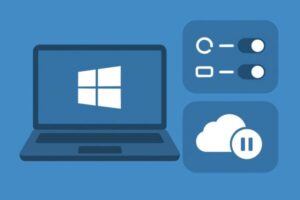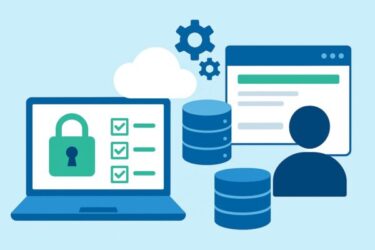
Microsoft’s own support tips point to two simple tweaks: Visual Effects (animations/transparency) and OneDrive syncing.
- 1 Introduction
- 2 Quick Checklist: “Will this help my PC?”
- 3 What’s really happening (in plain English)
- 4 Recommended Order (so you never feel lost)
- 5 Try-It-Yourself: A quick before/after test
- 6 Step 1 — Make Visual Effects lighter (minimal look change, easy win)
- 7 Step 2 — Make OneDrive sync “smarter,” not absent
- 8 Step 3 — Quick housekeeping (low effort, low risk)
- 9 Common Questions (short, practical answers)
- 10 Safety & Reversibility
- 11 Summary
Introduction
Think your aging hardware is to blame? Maybe not.
Before you consider buying a new PC, there are two settings that often make Windows feel sluggish—especially on everyday laptops and desktops:
- Visual Effects (animations and transparency that make Windows look nicer but add drawing work)
- OneDrive Sync (the background process that keeps files in the cloud up-to-date)
Both are easy to adjust, free, and reversible. In this guide, we’ll explain why they can slow you down, how to test safely, and exactly what to change—starting with the smallest visual changes first, then moving to OneDrive only if you still need more speed.
Quick Checklist: “Will this help my PC?”
If you check two or more boxes, you’re a strong candidate to try the steps below—in the order we give.
- □ You’re on a hard drive (HDD) or storage is low on free space (under ~10%).
- □ You have 8 GB RAM or less, or you keep many browser tabs open.
- □ You use a high-resolution display or multiple monitors.
- □ You sync large folders (photos, videos, RAW files) with OneDrive.
- □ File Explorer feels slow; thumbnails take a while to appear.
- □ After startup or big file copies, CPU/Disk hit ~100% for stretches.
- □ You use a work/school account that triggers background sync or scans.
- □ No obvious hardware failures lately—just a growing sense of slowness.
What’s really happening (in plain English)
- Visual Effects (animations/transparency)
Fancy effects look nice but require your system to render more frames and layers. On machines with limited RAM, integrated graphics, or busy CPUs, these micro-delays add up to a “sticky” feel when opening, moving, or switching windows. - OneDrive Sync (cloud file syncing)
OneDrive quietly scans, compares, and transfers files. After big photo/video imports—or when many thumbnails or indexes are being built—File Explorer and disk activity can feel clogged.
The antidotes are Selective Sync (sync only specific folders) and Files On-Demand (keep items in the cloud and fetch them when needed) so Windows isn’t constantly juggling massive local content.
Recommended Order (so you never feel lost)
- Lighten Visual Effects first (tiny look changes, often noticeable speed-up).
- If you still need more, tune OneDrive (don’t turn it off forever; get smarter about what syncs).
- Finish with quick housekeeping (startup apps, power mode, and free space).
Try-It-Yourself: A quick before/after test
Baseline (1–2 minutes):
- Open Task Manager and glance at CPU / Memory / Disk.
- In File Explorer, open Pictures and scroll through 10–20 images.
- In your browser, switch among 3–4 common tabs.
- Note your gut feeling: choppy? delayed? fine?
You’ll repeat these same actions after each tweak to judge improvements by feel, not just numbers.
Step 1 — Make Visual Effects lighter (minimal look change, easy win)
A) Easiest route (Windows Settings)
- Settings → Accessibility → Visual effects
- Turn Animation effects Off (window open/close motion)
- Turn Transparency effects Off (glass-like see-through look)
These two switches alone often reduce micro-lag with almost no “ugly” side effects.
B) Fine-tune (Performance Options panel)
- Press Win and type
sysdm.cpl→ Enter → Advanced tab - Under Performance, click Settings → Visual Effects tab
- Choose Adjust for best performance to start, then re-enable only what you value:
- Keep Smooth edges of screen fonts (text stays crisp)
- Keep Show thumbnails instead of icons (useful for photos/videos)
- Consider leaving window animations and shadows off (saves work)
Re-test your baseline actions. If the PC already feels snappier, you can stop here or keep reading for bonus gains.
Step 2 — Make OneDrive sync “smarter,” not absent
Rather than killing sync completely, reduce the “heavy” part so day-to-day use is lighter while your files remain available.
A) Pause briefly to test the impact
- Click the OneDrive cloud in the taskbar.
- Open the gear icon → Pause syncing (e.g., 2 hours).
- Repeat your baseline actions.
- If Explorer scrolling/search feels smoother, OneDrive activity is a factor. Proceed to Selective Sync.
B) Use Selective Sync (sync only specific folders)
- OneDrive icon → Settings → Account → Choose folders
- Uncheck very large or rarely used folders (e.g., bulk video, RAW archives).
- Ensure Files On-Demand is On: files stay visible but are downloaded only when opened.
Result: You preserve convenience while lowering constant disk and thumbnail churn. Explorer becomes more responsive, especially on photo-heavy libraries.
C) Smart storage habits (optional but helpful)
- Move long-term photo/video archives to an external SSD or separate drive not under continuous sync.
- Keep a real backup (sync is not the same as backup).
- Avoid importing thousands of media files right before a critical task; let indexing finish first.
Step 3 — Quick housekeeping (low effort, low risk)
- Startup apps: Settings → Apps → Startup → switch off anything you don’t need at login.
- Free space: Empty Downloads/Recycle Bin; clear temporary files; aim for 10–20% free.
- Power mode: Settings → System → Power → choose Balanced or Best performance (naming varies by device).
- Updates: Keep Windows/drivers current; reboot after big updates and give it a little time to settle.
Common Questions (short, practical answers)
Q. Will disabling effects make Windows look bad?
A. Usually not. Turn off Animations and Transparency first—these bring a speed win with negligible visual loss. If something bothers you, re-enable just that item.
Q. Do I have to stop OneDrive?
A. No. Use Pause only to test. Then apply Selective Sync and Files On-Demand so your files stay available without constant heavy scanning.
Q. It’s still slow after everything. What now?
A. Check for one-time heavy tasks (indexing, antivirus scans, giant imports). If slowness persists, verify free space, run a storage health check (SSD wear), and consider a RAM upgrade (if your device allows it). For HDD systems, moving to an SSD is the single biggest leap.
Safety & Reversibility
All changes here are reversible. You can toggle effects back on, un-pause OneDrive, or re-check folders at any time. Try changes for a day or two and keep what truly improves your workflow.
[PR] Looking to boost your productivity?
Pair these free speed-up tips with Microsoft 365 (Word/Excel/PowerPoint + 1TB OneDrive) for a smoother workflow. Always up to date, with easy document creation and cloud storage.
* This site uses affiliate links.
Summary
This isn’t about blaming Windows—it’s about reducing busywork your PC doesn’t need to do every second. Microsoft’s own support guidance points to lighter Visual Effects and smarter OneDrive sync as valid ways to improve responsiveness.
Start now (free and safe):
- Turn off Animations and Transparency (Visual Effects).
- Use Selective Sync and Files On-Demand to cut the constant churn.
If your everyday tasks feel smoother afterward, you’ve just saved money and time. If not, you still learned exactly where the bottleneck isn’t—and that’s valuable too.
Related Articles
・Fake CAPTCHA Scam: “I’m not a robot” Used to Spread Malware – How to Spot and Stay Safe
・Beginner-Friendly Guide: How to Manually Install Windows Updates in 2025 (Step-by-Step)
・Why Windows Doesn’t Remember Your Window Positions (and How to Fix It)


